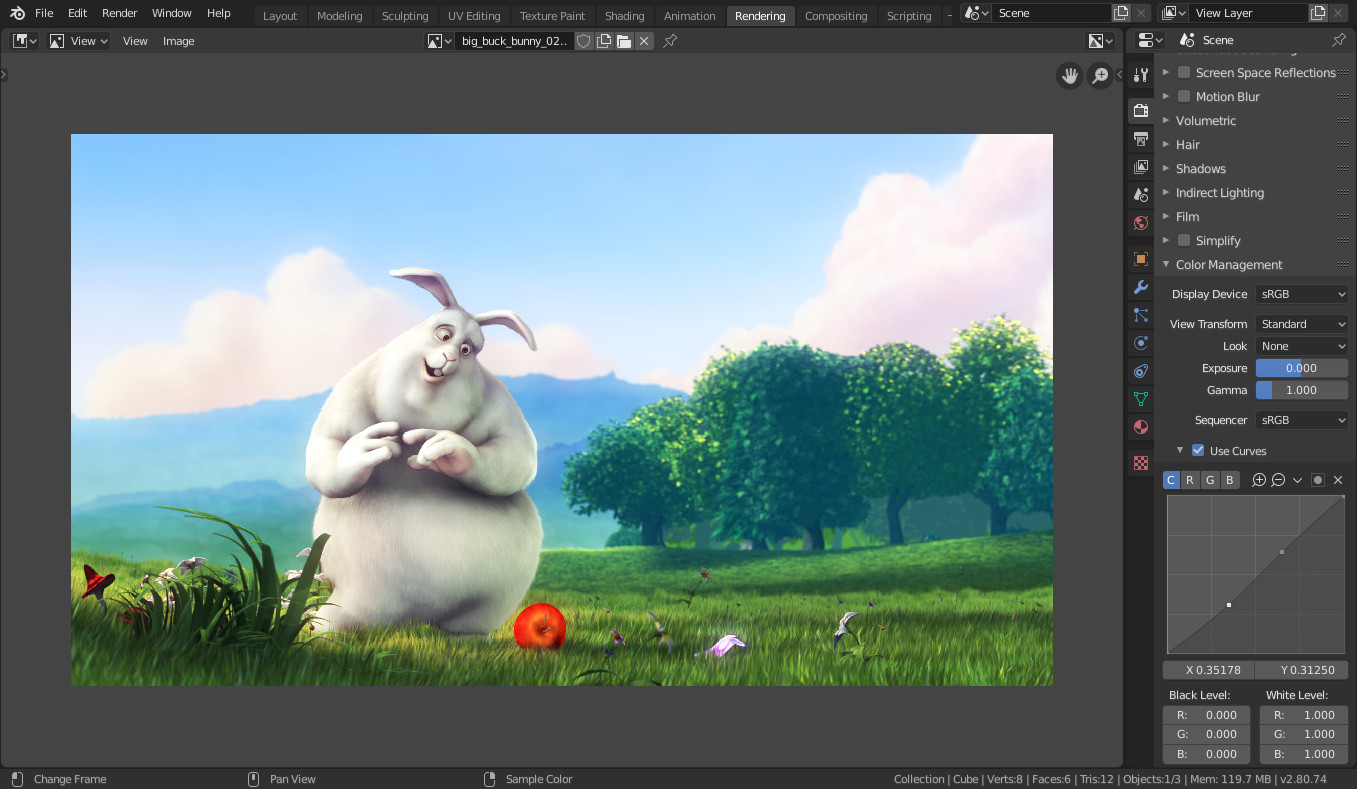About Blender¶
Welcome to Blender! Blender is a free and open-source 3D creation suite.
With Blender, you can create 3D visualizations such as still images, 3D animations and VFX shots. You can also edit videos. It is well suited to individuals and small studios who benefit from its unified pipeline and responsive development process.
Being a cross-platform application, Blender runs on Linux, macOS, as well as Windows systems. It also has relatively small memory and drive requirements compared to other 3D creation suites. Its interface uses OpenGL to provide a consistent experience across all supported hardware and platforms.

Who uses Blender?¶
Blender has a wide variety of tools making it suitable for almost any sort of media production. Professionals, hobbyists, and studios around the world use it for creating animations, game assets, motion graphics, TV shows, concept art, story-boarding, commercials, and feature films.
Check out the User Stories page on the Blender website for more examples.
Key Features¶
Blender is a fully integrated 3D content creation suite, offering a broad range of essential tools, including Modeling, Rendering, Animation & Rigging, Video Editing, VFX, Compositing, Texturing, and many types of Simulations.
It is cross platform, with an OpenGL GUI that is uniform on all major platforms (and customizable with Python scripts).
It has a high-quality 3D architecture, enabling fast and efficient creation workflow.
It boasts active community support. See blender.org/community for an extensive list of sites.
It can be installed into and run from any directory without modifying the system.
You can download the latest version of Blender here.

A rendered image being post-processed.¶
Blender makes it possible to perform a wide range of tasks, and it may seem daunting when first trying to grasp the basics. However, with a bit of motivation and the right learning material, it is possible to familiarize yourself with Blender after a few hours of practice.
This manual is a good start, though it serves more as a reference. There are also many online video tutorials from specialized websites.
Despite everything Blender can do, it remains a tool. Great artists do not create masterpieces by pressing buttons or manipulating brushes, but by learning and practicing subjects such as human anatomy, composition, lighting, animation principles, etc.
3D creation software such as Blender have an added technical complexity and jargon associated with the underlying technologies. Terms like UV maps, materials, shaders, meshes, and ”subdivs” are the media of the digital artist, and understanding them, even broadly, will help you to use Blender to its best.
So keep reading this manual, learn the great tool that Blender is, and keep your mind open to other artistic and technological areas – and you, too, can become a great artist.